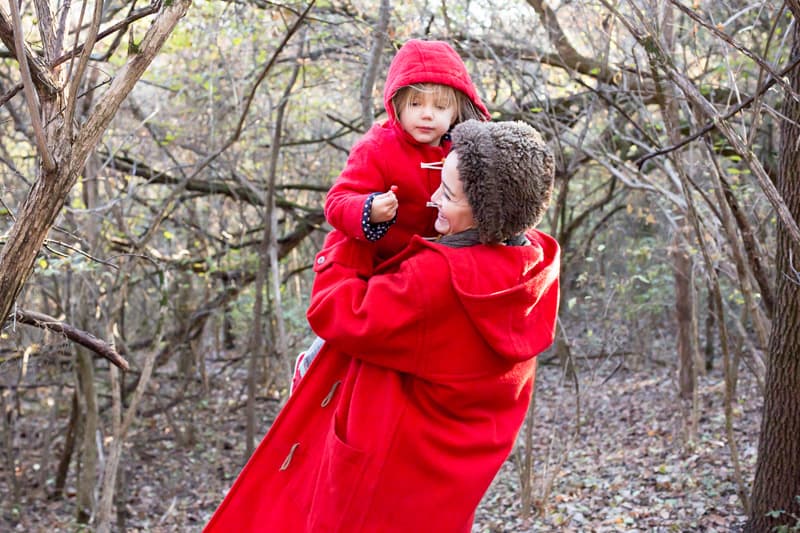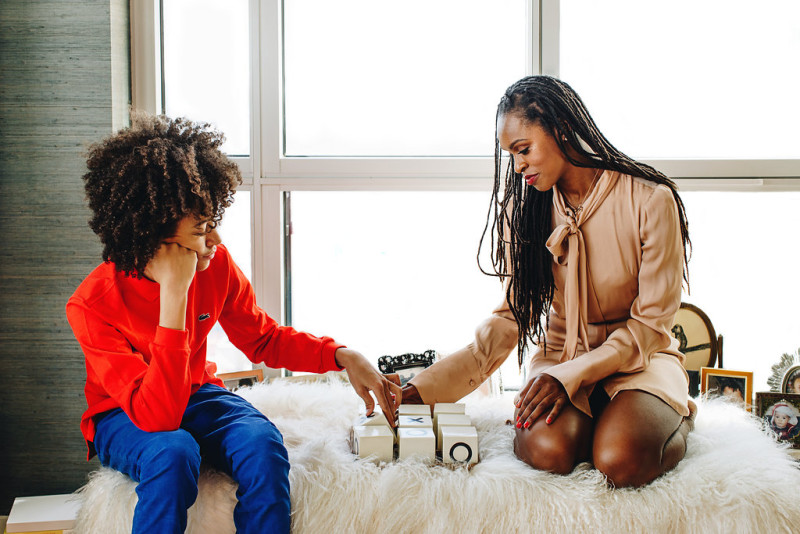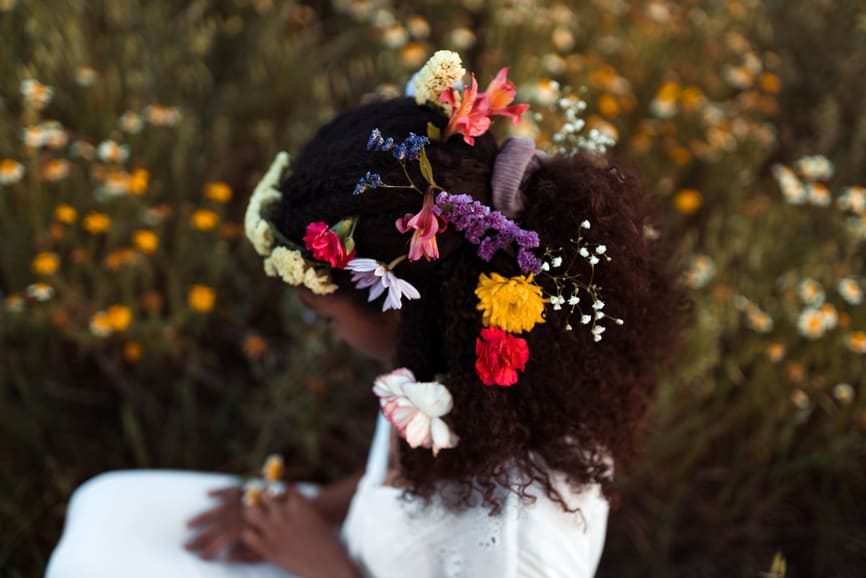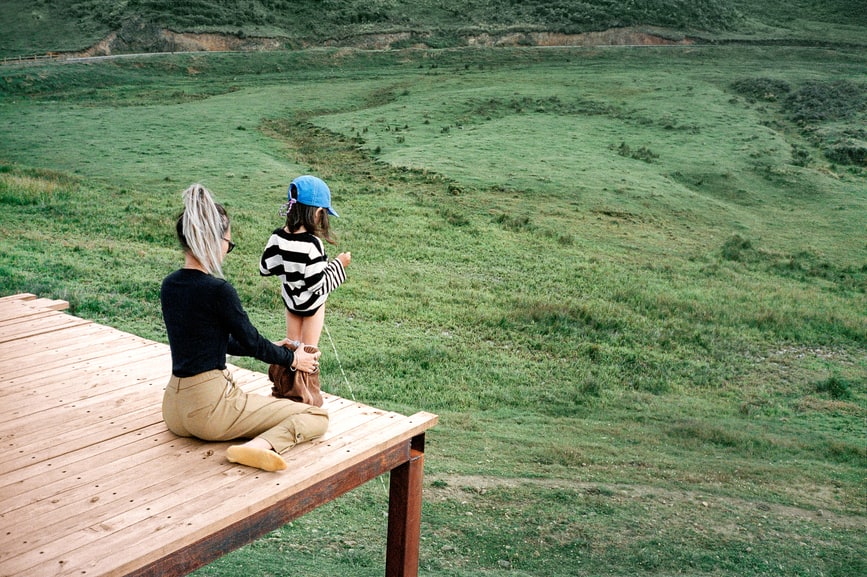
The Author Of “There’s No Such Thing As Bad Weather” On Getting Kids Outdoors
Written by Aja Lake of Kids in Nature
Photography by Photographed by James Kicinski-McCoy for MOTHER
Thanks in large part to the screen-heavy nature of today’s world, studies reveal both children and adults are spending less time connected to nature. This, of course, despite numerous reports that show just how key exposure to the outdoors is when it comes to our physical and mental health. In her book, There’s No Such Thing as Bad Weather, Swedish-American journalist, blogger, and mother of two, Linda Åkeson McGurk explores whether the nature-centric parenting philosophy of her native Scandinavia holds the key to healthier, happier lives for her children. Below, we caught up with the author (whose children are now 9 and 12) to hear about her own upbringing as well as how best to get kids outdoors…even in the dead of winter.
Why exactly is outdoor time so key for families?
“The research that has come out in the past decade or so shows that nature can have a powerful impact on the physical and mental health of both children and adults. For example, there is evidence that spending time in nature can alleviate symptoms of ADHD, improve motor skills, help prevent obesity, and lower the risk of depression, heart disease, and nearsightedness. I could go on about all the scientific findings, but they all basically confirm what I think we already knew intuitively—that nature makes us feel good and is essential to our quality of life. This is why I believe that allowing enough time for kids to play freely outdoors is just as important as making sure that they eat healthy food and get enough sleep. It should be at the heart of childhood. Plus, I really believe that kids need to be in nature to appreciate it and learn to care for it. Besides the obvious physical and mental benefits, I think having one foot firmly planted in the natural world can help guide us on our parenting journey. Whether you’re avid hikers or skiers, or just enjoy watching the clouds from your back porch, all these little moments with nature help you bond as a family and form your family identity and culture. Knowing this really motivates me to get outside with my kids every day, regardless of the weather, and I hope those will be the stories and the lifestyle that they’ll pass down to their own children one day.”
How did your Scandinavian upbringing influence your own parenting?
“When I had my first daughter in the U.S., I found it hard to navigate all the different parenting styles, so falling back on my Scandinavian upbringing came naturally to me. Scandinavian parenting culture is fairly uniform and dominated by a gentle, child-centered approach with a heavy dose of nature through friluftsliv and focus on the family through hygge. Friluftsliv loosely translates to open-air life and can be explained as seeking oneness with nature in everyday life, without a particular agenda. Foraging for mushrooms or berries in the woods or taking the kids for a picnic in the park are both examples of friluftsliv. Hygge is more about enjoying simple pleasures and having a cozy time together as a family, indoors as well as outdoors, but there’s a lot of overlap between the two. Sitting around a campfire in the woods, for example, is considered both friluftsliv and hygge. Both concepts are important building blocks of the culture and are passed down from generation to generation. As my kids have gotten older, I’ve continued to push these aspects of Scandinavian culture in my parenting, while at the same time embracing my favorite aspects of American parenting culture. That way, I’m hoping that they’ll get the best of both worlds.”
Kids can be known to protest: “It’s hot!” “It’s cold!” “It’s raining!” “It’s boring!” What do you say to parents and caregivers who want to get outside with kids without it feeling forced?
“This is a great question, because I think we’ve all been there at some point. I think the number one way to prevent it from happening is to make being outside a part of your daily rhythm or routine. That way, your child knows what to expect and that it’s a normal part of the day. But I also think it’s important to be tuned into what piques your child’s interest when you are outside and nurture that instead of pushing your own agenda, especially with young children. As parents we may have one idea of what we’re going to do once we’re outside, but if we let our kids lead the way they’re more likely to embrace it. There will still be times when they resist going outside, but don’t be discouraged when they do. Try to reframe the situation and give them some different options for what you can do once you’re outside. If they’re complaining about rain, say, ‘Look at those fun puddles that the rain is creating! Would you like to go jump in a puddle or should we check if we can find any earthworms?’ If encouragement doesn’t work, don’t be afraid to be firm without losing your cool. I usually go with, ‘We’re going to go outside for 15 minutes and then we’ll see how we feel.’ More often than not, I find that the resistance melts away once we’re outside. And if it doesn’t, at least we got out for those 15 minutes!”
Any specific tips for playing outdoors in the cold winter months?
“I usually advise people to look for outdoor gear that can keep out the weather as well as stand up against wear and tear. Good winter clothes for kids can be hard to find in regular department stores, since they tend to focus more on design than function. But the reality is that kids climb trees, crawl over rocks, and roll down hills regardless of the season, so they need outer layers with reinforced areas over knees and the seat, for example. I also favor coveralls and winter pants with snow locks at the leg openings and elastic bands that go under the foot, since those help tremendously when it comes to keeping kids’ feet dry. Integrated reflective trim is also super important for outdoor play after dark. As far as shoes go, look for boots that are both insulated and waterproof and pair them with wool socks on cold days. On really cold days, a good layering system is important for keeping kids warm. Start with a woolen or synthetic base layer, add an insulating mid layer—such as a fleece jacket and pants—and lastly add the wind and waterproof outer layer. When shopping, what you can’t find in local outdoors stores can be found online.”
What about the super-hot summer season?
“Growing up in Scandinavia, excessive heat was never a problem that I had to deal with, but after moving to Indiana, which gets very hot and humid in the summer, I had to change my rhythm to better fit the climate. Now when it’s hot, the kids and I are a lot less physically active, especially midday when the temperature peaks. Instead, we try to get outside during the early morning hours on in the evening, and we seek out shade. More natural areas tend to be better than man-made ones in the heat, since tree canopies have a cooling effect, whereas asphalt and buildings tend to increase the temperature. And when you do go out in the heat, make sure to keep everybody well hydrated and try to incorporate water in other ways. If you can’t be by a lake or pool, improvise at home with buckets of water for the kids to play with. There are also a ton of fun things to do with ice that will help them keep cool, like freezing some toys in a container and letting the kids peck away at the clump of ice with some tools. Lastly, let young kids go nude if they want to! Diapers can become uncomfortable in the heat and most babies and toddlers enjoy the freedom of being in their birthday suit.”
Any other words on the importance of exposing kids to nature?
“I have a holistic perspective on children’s health, which is why nature plays such a big part in our lives, along with the obvious things that keep us physically healthy, like eating whole foods, exercising, and getting enough sleep. Nature hones all of our senses and we know that it has a therapeutic effect on both children and adults. It is the perfect place for us to step back and give our children the space and time to direct their own play and learning, something that I think is crucial if we want to raise kids who are healthy, independent, confident, and resilient. You don’t have to live in pristine wilderness to make unstructured outdoor play a priority—nature is everywhere, even in the cities. And it’s a much-needed antidote to the common tendency to overcomplicate, overschedule, and over-intervene in the lives of children. Call it hyperparenting, call it helicopter-parenting; I don’t care much for labels, but I do think these recent trends are stunting children’s personal growth, independence, and ability to handle setbacks. If there’s one point that I hope people take away from my book, it is that it’s OK for us parents to take a step back and simplify childhood by trusting our children’s ability to figure things out on their own. We don’t have to plan their every move and attempt to make everything ‘educational,’ we just need to let them play often. We need to let them get dirty and be a bit wild, so that they learn to self-regulate. We need to let them be bored, so they will learn how to tap into their own creativity. We need to let them test their boundaries and make mistakes. And we need to let them take risks, so that they will learn to make judgments and build their self-esteem.”
For more on the importance of outdoor time and the keys to raising healthier, resilient, and confident children, check out There’s No Such Thing as Bad Weather. And for more articles on Scandinavian parenting, head over here.
Author Aja Lake is a family wellness consultant and writer specializing in nature immersion, environmental education, and natural parenting. She’s also the founder of Kids in Nature.
Share this story



